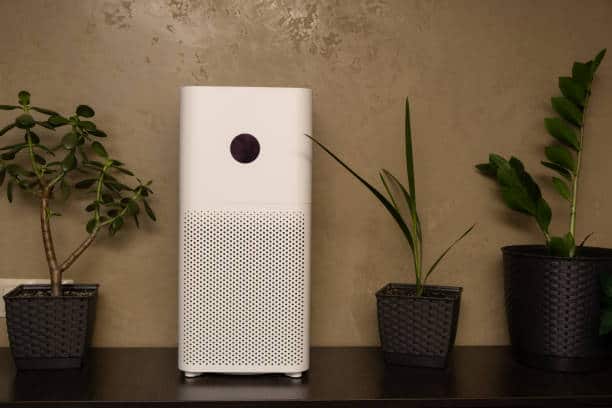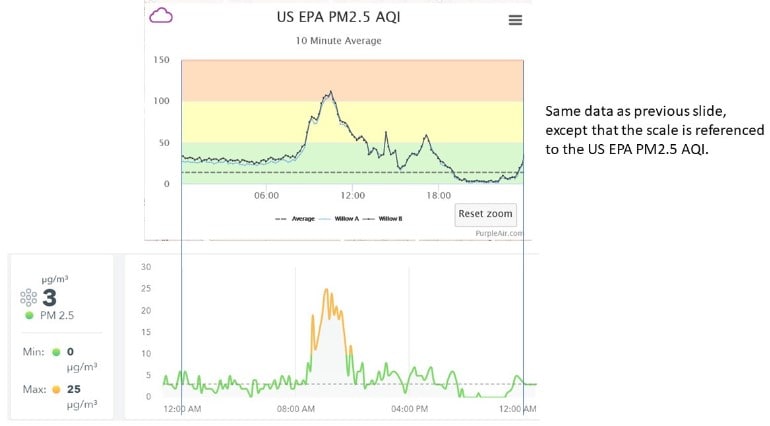Maintaining clean indoor air is crucial for promoting health and well-being, but the presence of cigarette smoke can pose significant challenges.
Cigarette smoke contains numerous harmful chemicals and pollutants that can negatively impact indoor air quality
In this article, we’ll explore how air quality monitors detect cigarette smoke, the health effects of exposure to cigarette smoke, and strategies for improving indoor air quality in spaces where smoking occurs.
The Composition of Cigarette Smoke:
Cigarette smoke is a complex mixture of gases and particulate matter, consisting of thousands of chemicals, many of which are harmful to human health.
of gases and particulate matter, consisting of thousands of chemicals, many of which are harmful to human health.
These chemicals are produced through the combustion of tobacco and additives present in cigarettes. Some of the key components of cigarette smoke include:
Nicotine: Nicotine is a potent alkaloid and the primary addictive component of tobacco. It acts on the brain’s reward system, leading to addiction and dependence.
is a potent alkaloid and the primary addictive component of tobacco. It acts on the brain’s reward system, leading to addiction and dependence.
Despite being addictive, nicotine itself is not a carcinogen, but it contributes to the health risks associated with smoking by promoting continued tobacco use.
Tar: Tar is a sticky, brown residue that accumulates in the lungs and other organs of smokers.
It contains numerous harmful substances, including carcinogens such as polycyclic aromatic hydrocarbons (PAHs) and tobacco-specific nitrosamines (TSNAs).
(PAHs) and tobacco-specific nitrosamines (TSNAs).
Tar is responsible for the characteristic staining of smokers’ fingers and teeth and plays a significant role in the development of smoking-related diseases.
Carbon Monoxide (CO): Carbon monoxide is a colorless, odorless gas produced during the incomplete combustion of tobacco.
It binds to hemoglobin in the blood, reducing its ability to transport oxygen to tissues and organs.
in the blood, reducing its ability to transport oxygen to tissues and organs.
Prolonged exposure to carbon monoxide can lead to tissue hypoxia and damage to vital organs, contributing to the development of cardiovascular diseases and other health problems.
Formaldehyde: Formaldehyde is a toxic and highly reactive compound present in cigarette smoke.
It is a known irritant to the eyes, nose, and throat and has been classified as a human carcinogen by several health organizations.
Formaldehyde exposure from cigarette smoke can increase the risk of respiratory diseases and certain types of cancer, including nasopharyngeal cancer and leukemia.
and certain types of cancer, including nasopharyngeal cancer and leukemia.
Benzene: Benzene is a volatile organic compound (VOC) and a known carcinogen found in cigarette smoke.
Chronic exposure to benzene has been linked to the development of leukemia, particularly acute myeloid leukemia (AML) .
.
Benzene is formed during the combustion of tobacco and can also be present in tobacco products as a result of pesticide use during cultivation.
is formed during the combustion of tobacco and can also be present in tobacco products as a result of pesticide use during cultivation.

Ammonia: Ammonia is a compound added to tobacco products to enhance nicotine absorption and increase the speed of nicotine delivery to the brain.
It acts by converting nicotine into its freebase form, which is more volatile and readily absorbed through the lungs and mucous membranes.
Ammonia also contributes to the alkalinity of cigarette smoke, making it less harsh and more palatable to smokers.
These are just a few examples of the many chemicals present in cigarette smoke, and exposure to these substances can have serious health consequences for both smokers and nonsmokers alike.
The toxic and carcinogenic nature of cigarette smoke underscores the importance of tobacco control measures and smoking cessation efforts to reduce the burden of smoking-related diseases on public health.
and smoking cessation efforts to reduce the burden of smoking-related diseases on public health.
How Air Quality Monitors Detect Cigarette Smoke?
Air quality monitors are sophisticated devices designed to measure various parameters of indoor air quality, including the presence of harmful pollutants like cigarette smoke.
like cigarette smoke.
These monitors utilize different sensors and detection methods to detect and quantify the concentration of pollutants in the air. Some of the key technologies used in air quality monitors for detecting cigarette smoke include:
Particulate Matter (PM) Sensors: Particulate matter sensors can detect and measure the concentration of fine particles suspended in the air, including those present in cigarette smoke.
These sensors use optical or laser-based techniques to detect particles of different sizes, allowing them to differentiate between cigarette smoke particles and other airborne contaminants
use optical or laser-based techniques to detect particles of different sizes, allowing them to differentiate between cigarette smoke particles and other airborne contaminants .
.
Volatile Organic Compound (VOC) Sensors: VOC sensors are capable of detecting a wide range of volatile organic compounds emitted by cigarette smoke, such as benzene, formaldehyde, and toluene .
.
These sensors utilize gas-sensitive materials that react to the presence of specific VOCs, producing a measurable signal that indicates the concentration of pollutants in the air.
Carbon Monoxide (CO) Sensors: Carbon monoxide sensors can detect and measure the concentration of CO gas emitted by burning tobacco in cigarettes.
These sensors utilize electrochemical or semiconductor-based technology to detect CO molecules in the air, providing real-time data on indoor air quality levels.
Particle Counters: Particle counters are specialized instruments that count and size particles suspended in the air, including those present in cigarette smoke.
These devices use techniques such as light scattering or laser diffraction to detect and quantify particles of different sizes, providing detailed information about the particle concentration and distribution in the air.

Multi-Gas Analyzers: Multi-gas analyzers are capable of detecting and measuring multiple gases simultaneously, including those present in cigarette smoke.
These analyzers utilize advanced detection technologies such as infrared spectroscopy or gas chromatography to identify and quantify specific gases in the air, providing comprehensive data on indoor air quality parameters.
By utilizing a combination of these technologies, air quality monitors can effectively detect and monitor the presence of cigarette smoke in indoor environments, providing valuable insights into indoor air quality conditions.
Can air quality monitors differentiate between cigarette smoke and other types of indoor air pollution?
Advanced air quality monitors can differentiate between cigarette smoke and other types of indoor air pollution based on the specific signatures of pollutants emitted by cigarette smoke.
can differentiate between cigarette smoke and other types of indoor air pollution based on the specific signatures of pollutants emitted by cigarette smoke.
By analyzing the composition of airborne contaminants, these monitors can provide accurate measurements of cigarette smoke levels in indoor environments.
Here’s how air quality monitors can differentiate cigarette smoke from other indoor air pollutants:
Particle Detection: Air quality monitors equipped with particulate matter (PM) sensors can detect the presence of fine particles emitted by cigarette smoke.
Cigarette smoke particles have unique characteristics, including size distribution and chemical composition, which can be identified and distinguished from particles generated by other sources such as cooking or outdoor pollution.
Chemical Analysis: Advanced air quality monitors may utilize sensors capable of detecting specific volatile organic compounds (VOCs) and other chemicals present in cigarette smoke.
By analyzing the chemical composition of the air, these monitors can identify signature compounds associated with tobacco combustion, such as nicotine, benzene, and formaldehyde.
This allows for the differentiation of cigarette smoke from other indoor pollutants based on their unique chemical fingerprints.
Real-Time Monitoring: Air quality monitors equipped with real-time monitoring capabilities continuously sample and analyze indoor air, allowing for immediate detection of changes in pollutant levels.
By tracking fluctuations in pollutant concentrations over time, these monitors can identify sudden increases in cigarette smoke levels and distinguish them from background levels of other indoor pollutants.

Data Analysis: Advanced air quality monitors often include data analysis algorithms that can interpret sensor readings and identify patterns associated with specific sources of indoor air pollution.
By correlating sensor data with known signatures of cigarette smoke, these algorithms can accurately differentiate between cigarette smoke and other types of indoor pollution present in the environment.
Advanced air quality monitors are capable of differentiating between cigarette smoke and other sources of indoor air pollution by analyzing the composition of airborne contaminants and utilizing sophisticated detection and analysis techniques.
are capable of differentiating between cigarette smoke and other sources of indoor air pollution by analyzing the composition of airborne contaminants and utilizing sophisticated detection and analysis techniques.
This capability allows for more accurate monitoring of indoor air quality and targeted mitigation efforts to address specific sources of pollution, including tobacco smoke.
How to improve Indoor Air Quality in Smoky Environments:
Implement Smoking Bans: Implementing smoking bans in indoor spaces can effectively reduce exposure to cigarette smoke and improve indoor air quality for occupants.
Establishing designated smoking areas outside of buildings can help minimize smoke infiltration into indoor spaces.
Increase Ventilation: Improving ventilation rates and airflow in indoor environments can help dilute and remove cigarette smoke particles and odors from the air.
Utilizing ventilation systems with high-efficiency particulate air (HEPA) filters can help capture and remove airborne contaminants effectively.
Use Air Purifiers: Installing air purifiers equipped with HEPA filters and activated carbon can help remove cigarette smoke particles, VOCs, and odors from indoor air.
Air purifiers can be particularly beneficial in areas where smoking occurs frequently, such as homes, offices, and hospitality venues.

Encourage Smoking Cessation: Promoting smoking cessation programs and providing support resources for individuals looking to quit smoking can help reduce overall smoking rates and minimize exposure to secondhand smoke in indoor environments.
Conduct Regular Air Quality Monitoring: Regular monitoring of indoor air quality parameters, including cigarette smoke, can provide valuable insights into IAQ conditions and help identify areas for improvement.
Utilizing air quality monitors with cigarette smoke detection capabilities can help building owners and managers take proactive measures to protect the health and well-being of occupants.
Health Effects of Exposure to Cigarette Smoke:
Exposure to cigarette smoke, whether firsthand or secondhand, can have serious health effects on individuals.
Some of the potential health consequences of exposure to cigarette smoke include:
Respiratory Issues: Cigarette smoke contains irritants and toxins that can irritate the respiratory tract, leading to symptoms such as coughing, wheezing, shortness of breath, and chest tightness.
Prolonged exposure to cigarette smoke can exacerbate pre-existing respiratory conditions such as asthma, chronic bronchitis, and emphysema.
to cigarette smoke can exacerbate pre-existing respiratory conditions such as asthma, chronic bronchitis, and emphysema.
Cardiovascular Disease: The chemicals present in cigarette smoke can damage blood vessels, increase blood pressure, and promote the formation of blood clots, increasing the risk of cardiovascular diseases such as heart attack, stroke, and peripheral artery disease.
such as heart attack, stroke, and peripheral artery disease.
Secondhand smoke exposure has also been linked to an increased risk of heart disease and stroke in nonsmokers.
Cancer: Cigarette smoke contains numerous carcinogens (cancer-causing agents) that can damage DNA and increase the risk of cancer development.
Smoking is a leading cause of lung cancer, accounting for the majority of cases worldwide.
In addition to lung cancer , cigarette smoke exposure has been linked to an increased risk of cancers of the mouth, throat, esophagus, bladder, pancreas, and cervix.
, cigarette smoke exposure has been linked to an increased risk of cancers of the mouth, throat, esophagus, bladder, pancreas, and cervix.

Reproductive and Developmental Effects: Pregnant women exposed to cigarette smoke are at an increased risk of complications such as miscarriage, preterm birth, low birth weight, and birth defects.
Children exposed to secondhand smoke may experience impaired lung function, respiratory infections, asthma, and sudden infant death syndrome (SIDS).
Given the significant health risks associated with exposure to cigarette smoke, it is essential to monitor indoor air quality and take steps to minimize exposure in indoor environments where smoking occurs.
associated with exposure to cigarette smoke, it is essential to monitor indoor air quality and take steps to minimize exposure in indoor environments where smoking occurs.
FAQs:
Are there specific air quality monitors designed for detecting cigarette smoke?
While there are air quality monitors available on the market that are specifically designed for detecting cigarette smoke, many general-purpose air quality monitors are also capable of detecting cigarette smoke using their particle, VOC, and CO sensors.
Can indoor air quality monitors detect secondhand smoke?
Indoor air quality monitors can detect secondhand smoke by measuring the concentration of pollutants emitted by cigarette smoke, including particulate matter, volatile organic compounds, and carbon monoxide.
Monitoring secondhand smoke levels can help protect the health and well-being of nonsmokers exposed to environmental tobacco smoke.
Conclusion:
Cigarette smoke contains numerous harmful chemicals and pollutants that can negatively impact indoor air quality and pose serious health risks to occupants.
Air quality monitors equipped with specialized sensors can effectively detect and monitor the presence of cigarette smoke in indoor environments, providing valuable insights into IAQ conditions.
By implementing strategies to minimize exposure to cigarette smoke and improve indoor air quality, building owners and managers can create safer and healthier environments for occupants.

